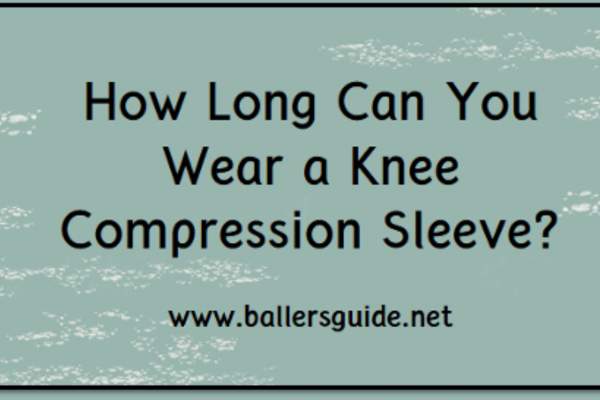
Knee injuries and conditions like arthritis can cause severe pain, making it hard to move around. Knee compression sleeves are a popular solution, offering support and pain relief. Made from flexible materials like neoprene, these sleeves help stabilize the knee without restricting movement, allowing you to stay active while managing discomfort.
But how long can you wear a knee compression sleeve? In this guide, we’ll cover the ideal duration for wearing basketball knee sleeves, the benefits they offer, and tips for using them effectively to help with your recovery and daily activities.
Table of Contents
Benefits of Wearing a Knee Compression Sleeve
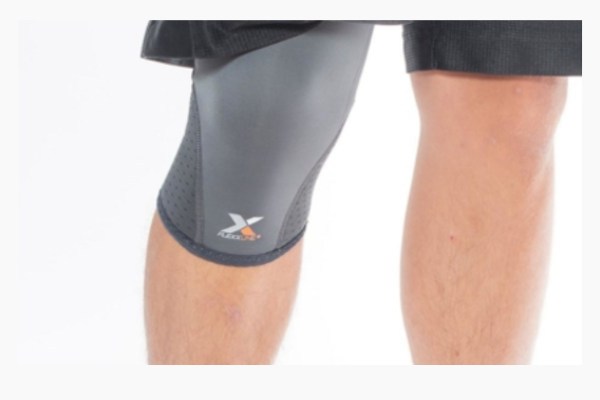
Here are the key benefits of using knee compression sleeves to support your knee health and manage pain:
- Pain Relief: Knee compression sleeves help reduce pain by boosting blood flow to the knee, which aids in managing swelling and discomfort.
- Reduced Swelling: The compression helps control inflammation and swelling, providing relief for those with injuries or conditions like arthritis.
- Enhanced Mobility: By providing support without restricting movement, knee sleeves allow you to stay mobile and active, even with existing knee issues.
- Prevents Further Injury: Compression sleeves reduce the risk of further damage by stabilizing the knee during physical activity, making them ideal for people recovering from injuries or those prone to knee problems.
- Ideal for Athletes: Knee sleeves are a great preventative measure for athletes or anyone engaging in high-impact activities, as they provide added support during intense movements.
Whether you’re recovering from an injury or looking to protect your knees during physical activities, they offer great support and comfort for everyday use.
Knee Compression Sleeves vs Knee Braces: Which One is Right for You?
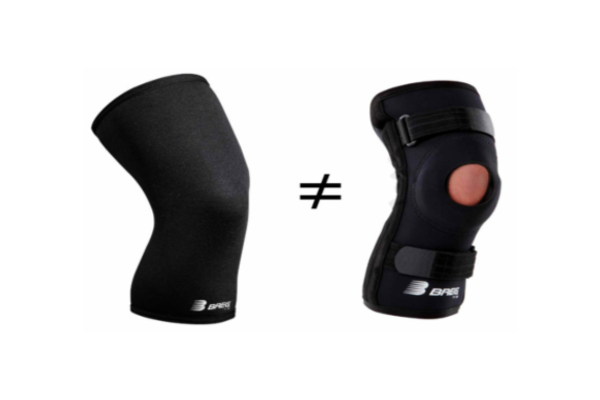
When it comes to supporting knee health, both knee compression sleeves and knee braces can be beneficial, but they serve different purposes. Let’s take a closer look at each one and how they can help.
Knee Compression Sleeves:
- Knee compression sleeves are designed to provide general support, reduce pain, and improve mobility.
- They help manage swelling and promote blood flow, which can be especially helpful for mild knee injuries or conditions like arthritis.
- Compression sleeves are great for those who need to stay active but want to protect their knees from further damage.
- They’re also useful for athletes or individuals lifting heavy loads, as they can reduce strain on the knee.
Knee Braces:
- Knee braces provide more stability and are typically recommended for people with serious knee injuries or those recovering from surgery.
- They offer more structure and support, helping to prevent further injury or strain.
- Braces are ideal for individuals who need to stabilize the knee during high-impact movements or for those prone to reinjuring the knee.
- They can also be beneficial for people with weak or unstable knees who need extra protection while moving.
Difference Between Knee Compression Sleeves and Knee Braces:
- Support Level: Knee braces provide more support and stability than compression sleeves, which offer lighter, more flexible support.
- Purpose: Knee compression sleeves are more for pain relief and managing mild injuries, while knee braces are used for more severe injuries or recovery.
- Comfort and Mobility: Knee sleeves are more comfortable for everyday use and activities, allowing for better mobility. Knee braces can be bulkier and restrict movement more.
- Activity Type: Knee sleeves are ideal for preventing strain during physical activities like lifting or exercise, while knee braces are better for situations where extra support and stability are needed, like after surgery or for serious injuries.
Ultimately, the choice between knee compression sleeves and knee braces depends on your specific needs, injury severity, and the activities you’re doing.
How Long Can You Wear a Knee Compression Sleeve?
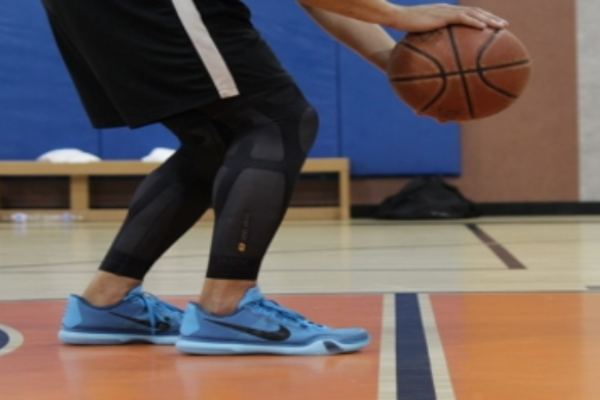
When it comes to wearing a knee compression sleeve for Basketball, the ideal time largely depends on your specific condition and comfort. These sleeves are generally designed for everyday wear, with materials like neoprene that provide comfort without causing chafing.
The Right Fit and Duration
Compression sleeves are effective for extended periods, but they should have the right level of tightness. If the sleeve is too tight, it can restrict circulation, which defeats its purpose. You should avoid wearing it if it leaves indentations on your skin or causes discomfort due to blood pooling in the area.
Seasonal Considerations
During the summer, wearing knee compression sleeves might become uncomfortable due to heat and humidity. If it becomes too hot, it’s important to take breaks and let your skin breathe, ensuring that you don’t feel stifled or constricted.
Consult with Your Physical Therapist
Ultimately, it’s important to listen to your body and assess how you feel while wearing the sleeve. For personalized guidance, it’s always best to consult with your physical therapist to determine the optimal duration for wearing a knee compression sleeve based on your unique needs.
Always prioritize comfort and adjust the duration based on your needs. Your physical therapist can offer the best advice tailored to your specific condition.
Some General Rules in Wearing Compression Sleeves
If you want to wear your knee compression sleeves longer without feeling discomforts, here are the general rules you need to follow:
- Choose a Good Quality Compression Sleeve: Quality is key. Ensure that the compression sleeve is made from high-quality materials that provide enough stretch and support. A poorly made sleeve will not offer the benefits you’re looking for.
- Check for Proper Fit: Make sure the sleeve is not too tight. It should improve pain, not worsen it. If it leaves indentations on your skin or makes the skin appear discolored, like blue, it may be restricting circulation.
- Ensure Comfortable Movement: After putting on the compression sleeve, test your movement. You should be able to walk or run comfortably. If the sleeve restricts your movement, it might be too tight.
By following these rules, you can maximize the benefits of your knee compression sleeve while avoiding unnecessary discomfort.
Factors to Consider for the Ideal Knee Compression Sleeve
To fully benefit from knee compression sleeves, it’s important to choose the best one for your needs. Keep these factors in mind when making your purchase:
- Look for Adjustable Compression: Comfort varies from person to person, so choose a sleeve with adjustable compression. This allows you to customize the tightness to your preferred level for optimal comfort and effectiveness.
- Choose Breathable, Moisture-Wicking Material: For extended wear, select a knee compression sleeve made from breathable material that wicks moisture away. This helps prevent sweat buildup, keeping your skin dry and comfortable, especially during warmer weather.
- Opt for Hypoallergenic or Natural Materials: If you have sensitive skin, choose a compression sleeve made from hypoallergenic or natural materials. These are gentler on the skin, reducing the risk of irritation or allergic reactions for longer, more comfortable wear.
By considering these factors, you can find the best knee compression sleeve that supports your knee health while ensuring comfort and durability.
Frequently Asked Questions

How long can I wear a knee compression sleeve?
You can wear a knee compression sleeve for several hours a day, but avoid wearing it continuously. Take breaks if it becomes uncomfortable.
Can I wear a knee compression sleeve while exercising?
Yes, knee compression sleeves are great for exercise, providing support, reducing swelling, and preventing injuries.
Are knee compression sleeves good for arthritis?
Yes, they help manage arthritis pain by promoting blood flow and reducing swelling.
Is it okay to wear a knee compression sleeve overnight?
It’s best to avoid wearing it overnight unless your doctor advises it.
How do I know if my knee compression sleeve is too tight?
If the sleeve leaves indentations or causes discomfort, it’s too tight and should be loosened.
Can I wear a knee compression sleeve in hot weather?
Yes, but make sure it’s breathable and moisture-wicking to keep you comfortable in the heat.
Conclusion
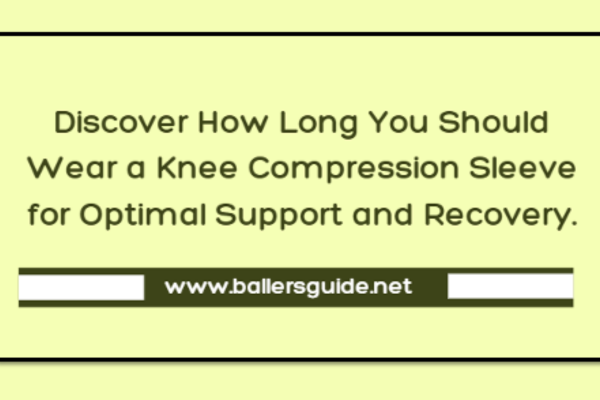
Knee compression sleeves can be a valuable tool for managing knee pain, reducing swelling, and enhancing mobility. They offer support during physical activities, help prevent further injury, and promote recovery. While knee compression sleeves are generally safe for extended wear, it’s important to ensure they are the right fit and not too tight to avoid discomfort or restricted circulation.
To get the best results, choose a high-quality, breathable sleeve, and consult with a healthcare professional to determine the optimal wearing duration based on your condition. Whether you’re recovering from an injury or simply looking for added support, knee compression sleeves can help improve your comfort and quality of life.
All in all, knee compression sleeves have a lot of benefits to people with knee ailments. Give this a go and include this in your pain management treatments.
Also, don’t forget to explore Basketball Arm Compression and Shooting Sleeves for added support and performance.
Our guide to the best knee sleeves is the best place to start!
